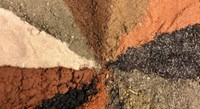Advertisement
Grab your lab coat. Let's get started
Welcome!
Welcome!
Create an account below to get 6 C&EN articles per month, receive newsletters and more - all free.
It seems this is your first time logging in online. Please enter the following information to continue.
As an ACS member you automatically get access to this site. All we need is few more details to create your reading experience.
Not you? Sign in with a different account.
Not you? Sign in with a different account.
ERROR 1
ERROR 1
ERROR 2
ERROR 2
ERROR 2
ERROR 2
ERROR 2
Password and Confirm password must match.
If you have an ACS member number, please enter it here so we can link this account to your membership. (optional)
ERROR 2
ACS values your privacy. By submitting your information, you are gaining access to C&EN and subscribing to our weekly newsletter. We use the information you provide to make your reading experience better, and we will never sell your data to third party members.
Natural Products
Finding new microbial secondary metabolites
Method identifies new families of glycopeptides, including ones with antibacterial and antiviral activity
by Celia Arnaud
January 14, 2019
| A version of this story appeared in
Volume 97, Issue 2
Some bacteria harbor many so-called silent or cryptic gene clusters that aren’t active under typical lab conditions. Secondary metabolites produced by these gene clusters, ones not directly involved in bacterial growth and development, could be a rich source of new medicines, but researchers need to find those metabolites first. To do that, Mohammad R. Seyedsayamdost and coworkers at Princeton University combine a technique called high-throughput elicitors screening with imaging mass spectrometry (Nat. Chem. Biol. 2019, DOI: 10.1038/s41589-018-0193-2). In this method, the researchers use small molecules to turn on silent gene clusters and identify the resulting metabolites with imaging mass spectrometry. The advantage of the new method is that the metabolites themselves rather than genetic assays are the readout. It works with sequenced and unsequenced bacteria. Using this approach, the Princeton team identified one of the smallest lasso peptides ever reported and two new families of glycopeptides, keratinimicins and keratinicyclins. The latter combines features of glycopeptide antibiotics such as vancomycin with features of oxazolidinone antibiotics such as linezolid, the first time such a combination has been reported. They exhibit potent and specific antiviral activity. In contrast, the keratinimicins exhibit antibacterial activity against multiple Gram-positive bacteria but not against vancomycin-resistant enterococci, which suggests that they may have a similar mode of action as vancomycin.




Join the conversation
Contact the reporter
Submit a Letter to the Editor for publication
Engage with us on Twitter